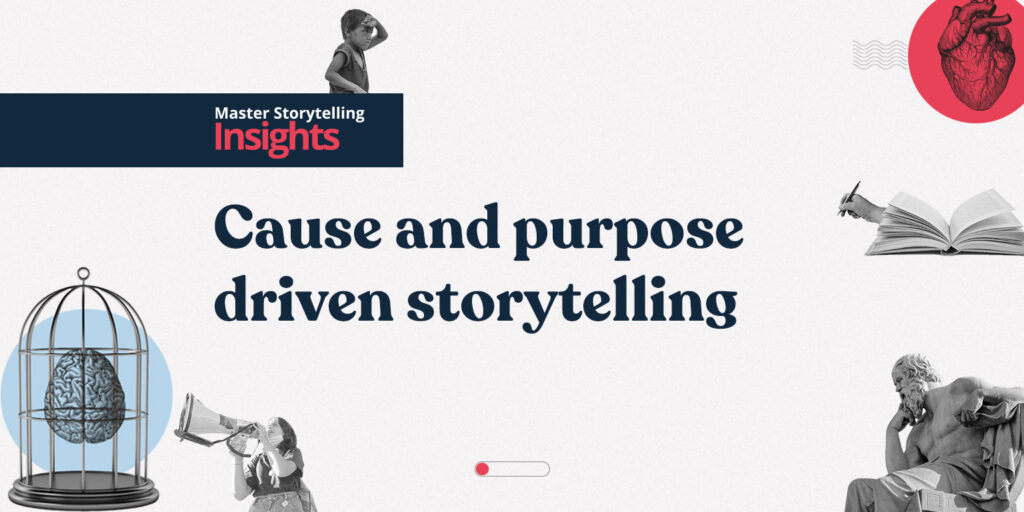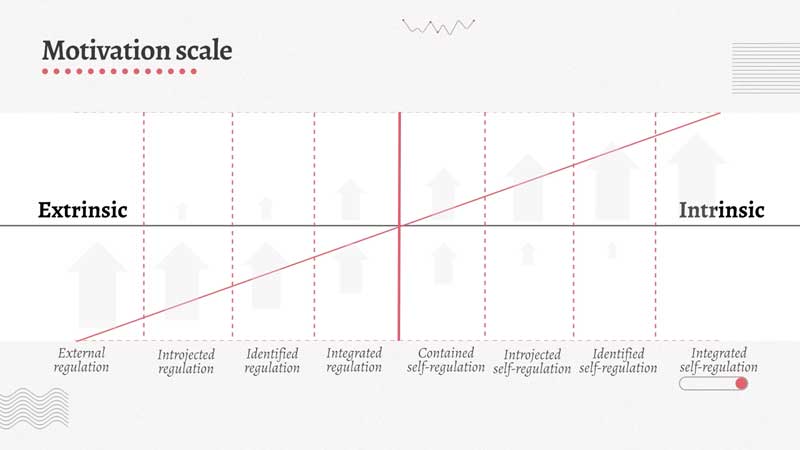Storytelling’s true nature seems to allude to us when viewed through our over-rationalistic and technocratic mindsets. But is there something fundamental that we are missing in our understanding of the nature of storytelling, and if so, how can we use this insight to bring about positive changes to the issues that we care about?
Whatever your cause or purpose may be, whether it is environmental, humanitarian or any other aspect of working towards the common good, we will all, at some point, encounter a strange paradox when trying to engage and motivate our audiences into action. This can simply be referred to as the motivation gap, the gap between what people say they believe in, and what they actually do.
This is a highly frustrating aspect of our work, especially when we consider that issues such as climate change and social inequality, the case for urgent action has been effectively communicated, and the pathways on how to bring about positive change have been clearly outlined. And yet we still encounter widespread apathy, indifference and polarisation from a whole range of audiences, and – even more frustratingly – we encounter the ‘thin yes’ with those audiences who claim to support our cause, but who fail to sign up, show up or take action in any meaningful way.
The reasons for this is nothing to do with a lack of skill, energy or passion on our behalf, but rather a lack of understanding of ourselves and what motivates us. The result is that we tend to use the wrong motivation type to try to drive positive behaviour, resulting in the conditions we are witnessing today, including audience fragmentation, increasing polarisation, as well as growing apathy and indifference to some of the most important and urgent issues we face today.
Only until we change this motivation type, can we begin to overcome some of the perennial problems we all seem to face when trying to engage audiences towards positive change in our world.
There are broadly two types of motivation, one is extrinsic, the other intrinsic. To drive extrinsic motivation requires a trigger, and that trigger is usually based on fear, guilt, duty, ego, or any other of our lower values. This motivation type is ideal for creating short-term results, but terrible at creating long-term behaviour change. As this motivation type tends to create anxiety, it can be seen as a psychological pollutant. If we imagine this motivation type as an engine, it would be a fossil-fuelled engine. The engine works, but at a cost, and that cost is felt in the long term as the psychological pollutants increase over time.
Intrinsic motivation, by comparison, works in an entirely different way and requires a different set of triggers. These triggers are found when we create a dynamic tension around our higher values, connect our audiences to a higher purpose, create a sense of belonging and work with storytelling dynamics to drive positive and long-term behaviour change. If this motivation type was an engine, it would be an electric engine, that is self-powered, has no psychological pollutants and thrives when it plays to higher values.
If we are serious about creating long-term behaviour change, then switching from an extrinsic to an intrinsic motivational engine is essential. Using an extrinsic engine, which is a psychologically polluting engine, to try to drive positive change makes no real sense, and yet we can see that most organisations and movements will use extrinsic motivation to drive all of their campaigns, fundraisers, volunteer recruitment strategies and all different types of audience engagement.
The reason why we tend to lean towards the lower end of the motivation continuum is no coincidence. The reason for this clear trend can be explained by the dominant approach to audience engagement, which is through marketing theory and practices. We call this the marketing paradigm, and escaping from this paradigm and shifting towards a storytelling paradigm is essential if we want to bring about real change on the issues we care about.
This shift from marketing to storytelling means that we must be willing to think about using an intrinsic motivational engine for everything that we do. This necessary shift in focus from creating short-term deliverables to long-term behaviour change is essential if we are to overcome some of the stubborn issues around low motivation, growing apathy and polarisation of our audiences.
Rather than seeing storytelling as a technique, or a tool to be used to enhance audience engagement, instead, we should view storytelling as a completely different way of thinking and approaching all audience engagement and motivation.
Most storytelling that we see today has more in common with marketing than storytelling. This is where stories are used to create an emotive response in order for you to give or take action. So much that passes for storytelling these days is not storytelling, its marketing.
The result of which is that audiences will, over time, turn off and disengage, when they spot the popular marketing technique, that seeks to manipulate them in order to give, or take action.
What is storytelling for a cause?
Storytelling for a cause is our unique storytelling approach for audience engagement and motivation. It is based on a range of insights taken from philosophy, neuro-psychology, social psychology, theology and literature. While it is purposefully designed for individuals, organisations or movements that have a cause, it can be used in any context where you are looking to motivate people to do something without using fear or creating anxiety as a motivational trigger.
Our Storytelling for a Cause storytelling approach cannot be defined as a single methodology, or a communication technique, but rather is made up of a whole eco-system of resources, insights and approaches that seek to motivate audiences into action by using storytelling dynamics to ‘lift’ audiences up to a greater purpose.
You can use this methodology on any cause, including environmental or social-based causes. The core concept that drives this methodology is based on, what we call, the Storytelling Paradigm, which works like a motivational engine to bring about positive and meaningful change. Using this technique demands a conscious and intentional shift away from standard marketing logic to embrace new methodologies that find their home in storytelling logic.
So much that passes for storytelling these days, is not storytelling, it's marketing.
Kieran O'Brien
By changing our approach to audience engagement and motivation, we can overcome some of the following problems we encounter:
- Where we don’t keep telling the same story (read as metanarrative) again and again, expecting different results.
- We can reach out to cold and indifferent audiences who react negatively to marketing approaches
- We are no longer stuck in a perpetual cycle of high energy, high resource campaigning
- We can tell ‘new stories’ that no longer follow the predictable path of marketing messages
The power of storytelling
Learning how to use the power of storytelling to drive positive change takes time and specialist training if we are to deliver on this ambition. Shifting from marketing logic to storytelling logic demands a deep dive into a whole range of topics, including:
- the nature of marketing theory, and why marketing approaches can undermine the causes that we are working towards
- motivational theory, and why current motivational models are not fit for purpose to help us address the urgent issues we face today
- values theory and how to work with values using a different mindset, where we focus on the flow of values
- rediscover the true nature of storytelling, and how our great ancestors used storytelling to regulate values and behaviour
Shifting from a marketing mindset to a storytelling mindset means adopting a new mindset that we call Master Storytelling. This is a whole new approach to storytelling where you work with metanarratives to drive real and meaningful change on the issues that you care about.
Becoming a Master Storyteller depends on adopting three core elements and insights, and adapting them to your work. They are:
- Relationality, working with the relational aspect of our thinking and working with implicit nature of storytelling
- Values-ception, being able to understand and perceive the relational nature of values
- Purpose, working with intrinsic purpose and the nature of intrinsic motivational triggers
View our article on Master Storytelling to find out more.

Getting started with Storytelling for a cause
Start your journey towards becoming a Master Storyteller with our unique online training courses and workshops below. Our main training programme ‘Storytelling for a cause – The Climate Edition’ is an in-depth training programme (13hrs+) that explores a wide range of insights, techniques and approaches to storytelling. Even if your cause is not environmental, you will benefit from the insights found on this training, which can be applied to any cause.
Our full online training course
New training programme.
Become a Master Storyteller with our specialist 13hrs+ online training course
Motivation theory
Explore a new approach to motivational theory and how to work with intrinsic motivational triggers
values theory
Insights into values theory and how to work with the flow of values and their relationship to each other
neuropsychology
Utilising insights on the different values systems of the two brain hemispheres and how to apply them
storytelling
Learn how to become a Master Storyteller, someone who can create powerful metanarratives
Storytelling training programmes.
These online, self-directed training courses are full of specialist insights, toolkits and methodologies that are designed to help you to create meaningful change in your work.





